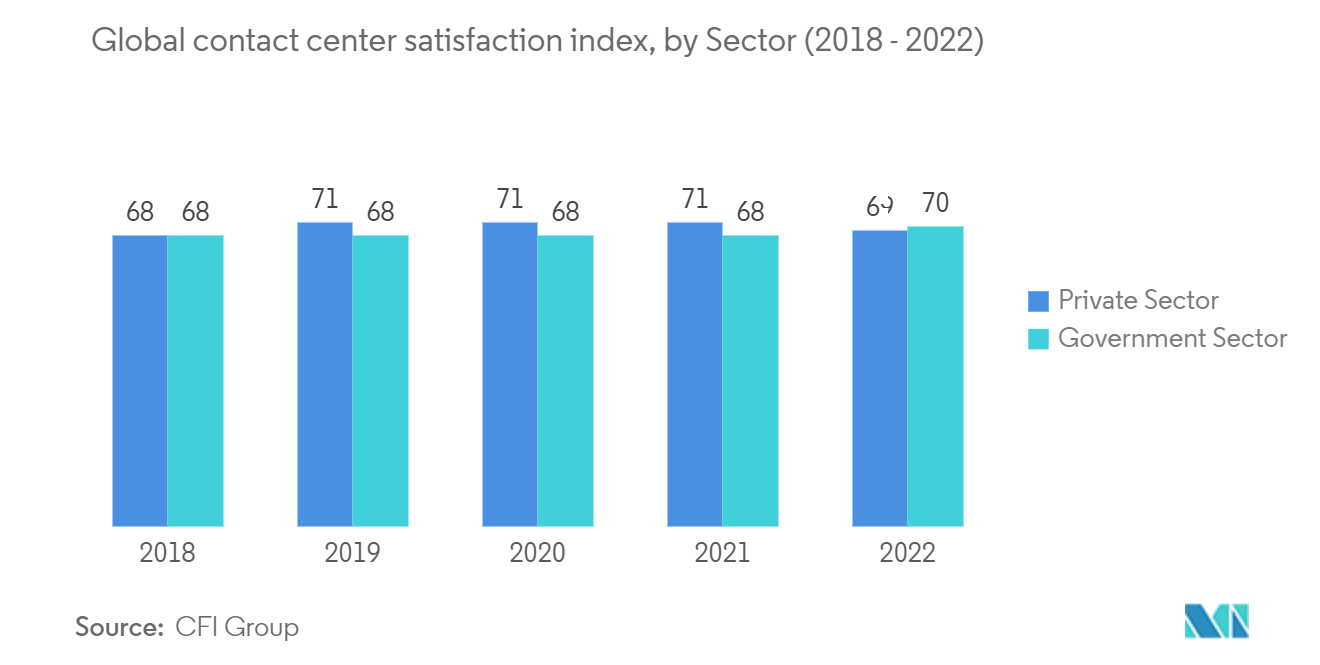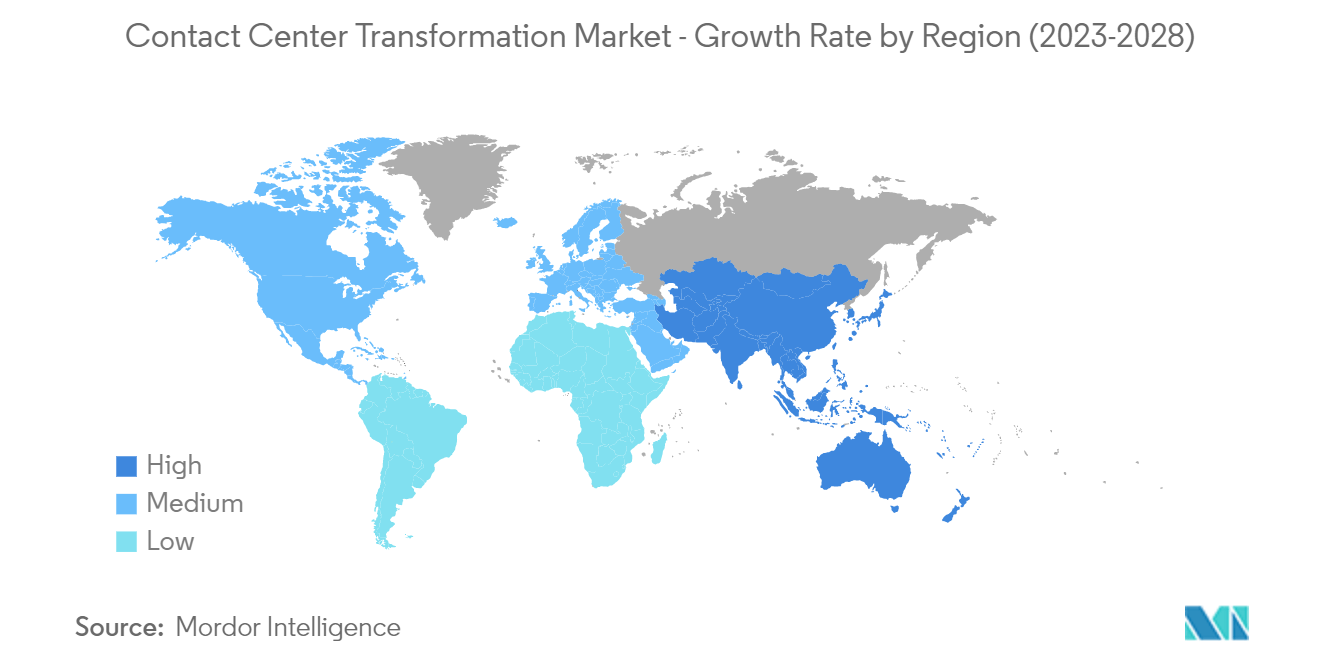Market Trends of Contact Center Transformation Industry
Intelligent Call Routing is Expected to Hold Significant Share
- Intelligent call routing simplifies the call process by connecting customers with the best agent for meeting their needs. In a typical contact/call center environment, the calls may be routed through interactive voice recording (IVR) to the most appropriate department or sent to an initial operator forwarding the call to the right person. However, intelligent call routing makes this process far more efficient.
- At a current measurement, 95-99% of the companies are randomly routing the customer calls or using methodology other than intelligent routing to connect calls to agents based on the customer's unique needs. In the current customer experience economy, the major focus is, thus, on personalized experience, which makes this option viable.
- Multiple organization leaders project an increased talent requirement for call centers, making automation an important element. Costly investments in training agents and hiring highly educated agents would be wasteful unless the customers connect to the right agent quickly. Intelligent call routing has proven useful in achieving this.
- Organizations struggling to use artificial intelligence (AI) to automate customer service are regarded the same as the lack of machines' capability to deal with natural languages. Though agents will not be fully automated anytime soon, intelligent call routing systems can help connect customers to agents most suited to solve their problems. A player such as Wise.io uses machine learning techniques to learn from the agents' prioritization of the customers. Its predictive engine creates tickets for the right agents to help them provide more personalized service quickly. Furthermore, knowing customers through their communication preferences and personality styles lets businesses personalize the customer experience at scale.
- Predictive Behavioral Routing (PBR) utilizes a proprietary and exclusively licensed language-based behavioral model with data for hundreds of millions of customers through millions of language-based personality algorithms. The same is known to transform the call router from a tactical call delivery tool into a strategic solution.

North America is Expected to Hold Significant Share
- North America is one of the prominent markets for contact center solutions and services, owing to the propensity and regulations governing enterprises to offer superior customer services in the region. The number of contact centers operating in the region is growing at a steady pace. According to the Bureau of Labor Statistics, the number of contact center employees in the United States in 2021 stood at 2.79 million.
- Businesses in North America have rapidly adopted and invested in emerging technologies such as cloud platforms, big data, and analytics. Furthermore, organizations must boost their regional company efficiency by improving export and incoming processes. Moreover, a significant number of contact centers in the area is likely to generate further potential for growth in the regional market.
- According to a survey conducted by the Site Selection Group, in the United States, there were 404 call centers opened or extended from 2016 to 2021. The increase in establishing new call centers and expanding call centers drives the contact center transformation market in the North American region.
- The companies present in the North American region are providing new solutions, for instance in September 2022, RingCentral Inc., one of the leading providers of global enterprise cloud communications, video meetings, collaboration, and contact center solutions, announced the release of AI-powered video capabilities and expanded browser compatibility for RingCentral MVPTM and RingCentral Video clients. With the current global workforce adopting hybrid work, there has never been a greater demand for quality and more intelligent meeting experiences.
- The enterprise propensity toward omnichannel contact centers in the region is increasing. Additionally, enterprises are increasingly looking to invest in technologies to enhance their revenues, as technology is directly linked to revenue growth.


